calsfoundation@cals.org
Action at Fayetteville (April 18, 1863)
|
Location: |
|
|
Campaign: |
None |
|
Date(s): |
April 18, 1863 |
|
Principal Commanders: |
Col. Marcus LaRue Harrison (US); Brig. Gen. William L. Cabell (CS) |
|
Forces Engaged: |
Col. Marcus LaRue Harrison’s First Arkansas Cavalry and Col. James M. Johnson’s First Arkansas Infantry (US); Col. Charles A. Carroll’s Arkansas Cavalry and Col. James C. Monroe’s Arkansas Cavalry, some Texas and Missouri troops (CS) |
|
Estimated Casualties: |
Approx. 50 (US); approx. 50 (CS) |
|
Result: |
Undecided |
The indecisive Action at Fayetteville on April 18, 1863, symbolized the Civil War in Arkansas as well as any other event in the state. The Confederates failed to achieve their goal of driving the Union forces out of Fayetteville (Washington County) and northwest Arkansas; however, it was only a few days after the battle that Federal authorities ordered the abandonment of the Fayetteville post.
Confederate Brigadier General William L. Cabell’s cavalry brigade included the men of Colonel Charles A. Carroll’s Arkansas Cavalry and Colonel James C. Monroe’s Arkansas Cavalry, along with some Texas and Missouri troops. In opposition were Colonel Marcus LaRue Harrison’s First Arkansas Cavalry and Colonel James M. Johnson’s First Arkansas Infantry.
Cabell’s Confederate cavalry command of about 900 left Ozark (Franklin County) on April 16 with a mission to attack the Federal command at Fayetteville. The Union army occupied the town as a place to care for the wounded after the bloody Battle of Prairie Grove on December 7, 1862. Following the removal of the seriously injured and sick soldiers to Springfield, Missouri, in March 1863, Fayetteville became a Union outpost under the command of Colonel Harrison. General Cabell believed the removal of the Federals from Fayetteville was the first step in the Confederate recovery of northwest Arkansas. The initial incident took place the night before the battle near West Fork about nine miles south, when Lieutenant James A. Ferguson and his men from Carroll’s Arkansas Cavalry discovered a party in a farmhouse, with nine bluecoats in attendance who were quickly captured.
Just after sunrise on April 18, Confederate troops clashed with dismounted Union pickets east of Fayetteville. The Southern soldiers killed three of the guards and captured others, but the sound of gunfire alerted the Union troops in town, eliminating the element of surprise. The Confederates moved to attack from the south with their artillery positioned on East Mountain, overlooking the city from the east. Federal troops reacted by setting up a battle line consisting of the First Arkansas Cavalry dismounted and three companies of the First Arkansas Infantry in reserve. Colonel John Scott’s Confederates charged through the streets of Fayetteville at about 6:00 a.m., heading toward the Union headquarters at the home of Jonas Tebbetts. As they approached the house, the Confederate attack halted, awaiting support from their cannon on East Mountain. Lieutenant William Hughey’s two cannon responded with canister and shell, demoralizing some of the Union soldiers. One shell smashed into the cellar of William Baxter’s home, where several women and children had sought shelter.
Colonel James Monroe dismounted his Confederate cavalry and advanced toward the left flank of the Union army, where heavy skirmishing broke out. Several Federal soldiers fell wounded, but the attack failed to break through the Union lines and the Southern soldiers fell back. The fighting shifted to the center of the Union line, where men from Carroll’s Arkansas Cavalry captured the Baxter house but could not dislodge the Federals from the Tebbetts house. The Southern troops captured several soldiers and destroyed a small Union supply train in southeast Fayetteville. Despite such efforts, the Confederate momentum diminished as the Federal troops rallied, using their superior firepower to drive back the enemy.
Armed with long-range rifled muskets, the Union troops poured a destructive fire into the poorly armed Confederates. Harrison ordered an attack against the Southern artillery on East Mountain by two companies of the First Arkansas Cavalry. Before this was accomplished, Monroe led a mounted Confederate cavalry charge up Dickson Street toward Union headquarters. The Southern horsemen found themselves in a deadly crossfire, which cost them their color bearer. Soon, Monroe recalled his cavalry.
Meanwhile, the two companies of the First Arkansas Cavalry approached the Confederate battery on East Mountain under cover. When in range, they opened with a volley, killing one Rebel and wounding several. The Southern troops quickly limbered their cannon and withdrew, having exhausted their ammunition. Without artillery support, the Confederates withdrew from the city at about 10:00 a.m. and rode south without Federal pursuit. Casualties were almost even, with about fifty in each command.
The majority of the troops on the opposing sides in the Battle of Fayetteville were from Arkansas, given that the northwestern portion of the state was often mixed in its allegiances, with some residents supporting the Union and others the Confederacy. Many came from the Ozarks, making this minor engagement a fratricidal event in Arkansas history as neighbor battled neighbor. The Confederates failed to achieve their immediate goal of forcing the withdrawal of Union forces from northwest Arkansas. Ironically, the skirmish convinced Union commanders that Fayetteville was exposed to attack and therefore should be abandoned. Harrison’s Union troops marched out of town on April 25 but returned in September and remained until the end of the war.
For additional information:
Christ, Mark K. ed. Rugged and Sublime: The Civil War in Arkansas. Fayetteville: University of Arkansas Press, 1994.
Mahan, Russell L. The Battle of Fayetteville, Arkansas—April 18, 1863. Centerville, UT: Historical Enterprises, 1996.
———. Fayetteville, Arkansas in the Civil War. Bountiful, UT: Historical Byways, 2003.
———. Federal Outpost at Fayetteville: The First Arkansas Union Cavalry. Centerville, UT: Historical Enterprises, 1996.
Scott, Kim Allen. “The Civil War in a Bottle: Battle at Fayetteville, Arkansas.” Arkansas Historical Quarterly 54 (Autumn 1995): 239–268.
Don Montgomery
Prairie Grove Battlefield Historic State Park
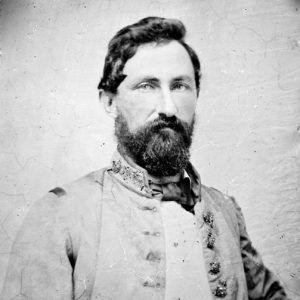
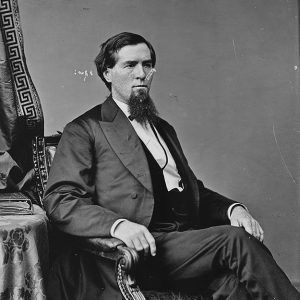
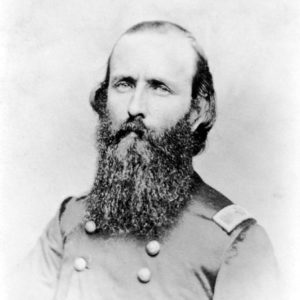
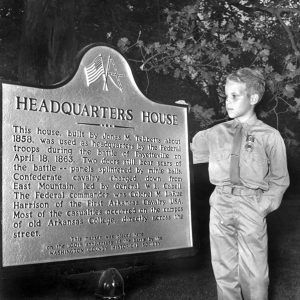
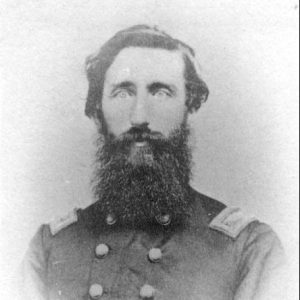




Comments
No comments on this entry yet.